Contents
- Literary & Performing Arts
- Tambad
- Lavani
- Musical Traditions of the Nath Panthis
- The Sant-Poets of Ahilyanagar
- Sheikh Muhammad
- Sant Mahipati
- Sant Dnyaneshwar’s Connection
- Handicrafts
- Sisal Handicraft
- Ganpati Murti Making
- Wooden Handicraft Furniture
- Metal Handicrafts
- Cultural Programs
- International Film Festival of Ahilyanagar
- Artists
- Pramod Kamble
- Dadu Salve
- Sources
AHILYANAGAR
Artforms
Last updated on 6 November 2025. Help us improve the information on this page by clicking on suggest edits or writing to us.
Literary & Performing Arts
Tambad
Tambad is a dance form which is popular in Bhandardara in Akole Taluka of Ahilyanagar district. The dance form, usually, is performed in groups that involve both men and women, where both wear similar colored outfits and accessories.
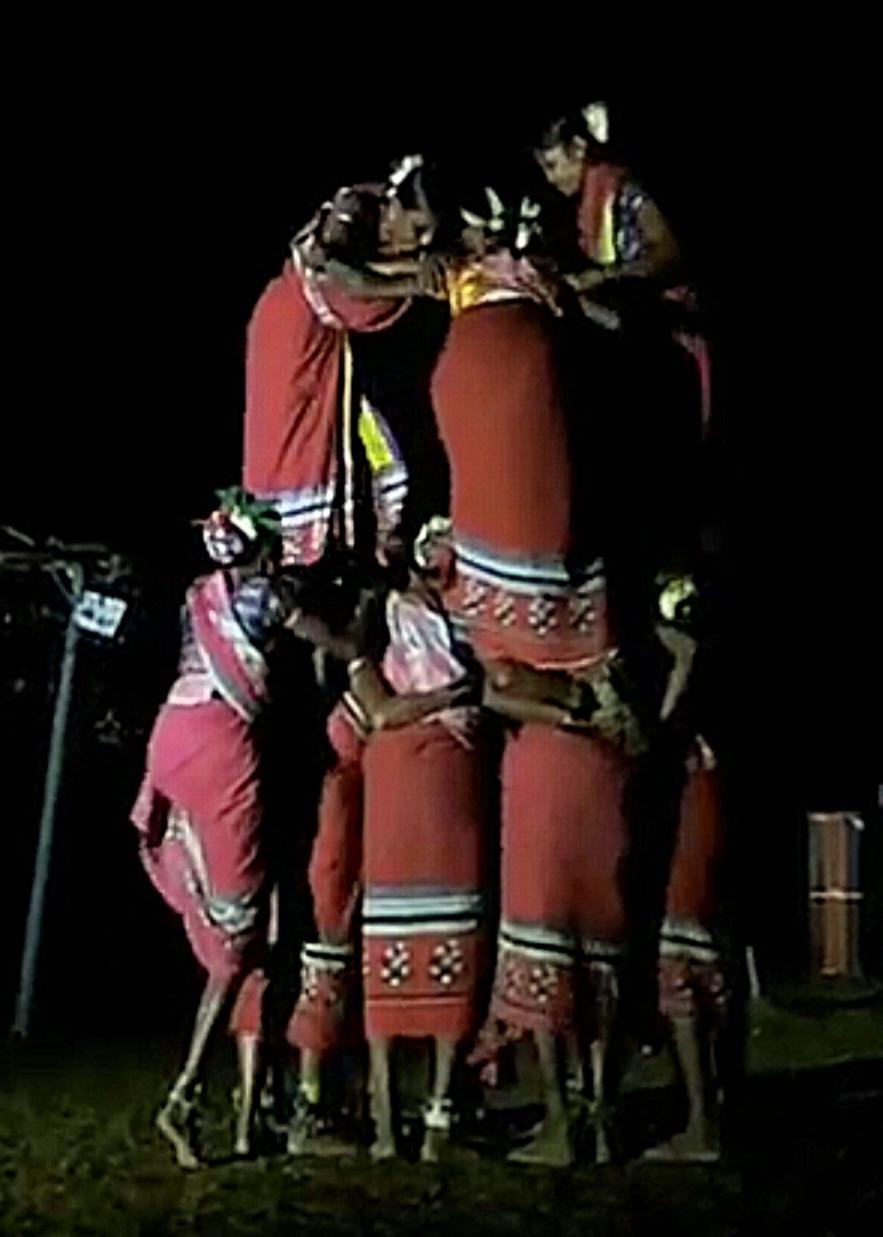
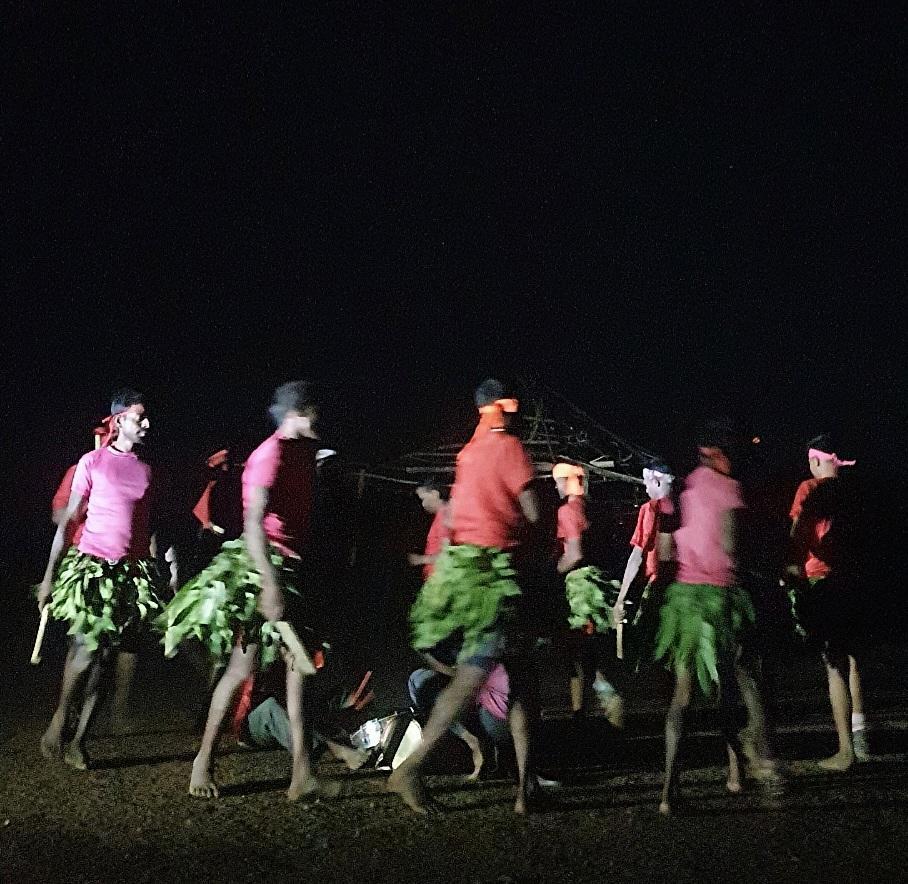
In the center, two men play musical instruments while the rest form a circle around them, singing, dancing, and moving in unison. While wearing a skirt made of leaves around their waist, red t-shirt and tie a thin band on their heads, men hold dandiyas during the dance. Women, dressed in sarees and adorned with flowers in their hair, form a formation by standing on top of one another.
The dance is performed barefoot, with participants singing and dancing for over an hour. Amidst the performance, men, disguised as animals like monkeys, wild boars, and cheetahs, make dramatic entrances from the opposite side, adding an element of surprise for the audience.
Lavani
Lavani is a traditional folk performance art of Maharashtra that combines both song and dance. The history of the artform can be traced back to the 17th century. Remarkably, the art form is native to Maharashtra and continues to hold cultural significance for the State’s Marathi-speaking population. Over the years, several cultural centres dedicated to Lavani have emerged across Maharashtra, becoming hubs for this art form. Currently, according to journalist Amey Tirodkar (2021), there are “four major cultural centres for Lavani” in Maharashtra, with Jamkhed of Ahilyanagar district being one.
The town is, notably, home to many theatres and draws many artists who are tied to this art form. Jamkhed, locals say, is home to eight Sangeet Baris (Kala Theaters). Other than that, the art form also has a long legacy in the district, with the popularity of its artists “Sunderabai and Kausalyabai of Kopargaon” being mentioned in the district Gazetteer (1976).
Musical Traditions of the Nath Panthis
Musical traditions composed and performed as an expression of devotion to a higher, divine power such as bhajans, kirtans, and akhyans have for long been an integral part of India’s artistic heritage. Perhaps one of the most enduring practices of this musical tradition in Ahilyanagar district has been that of the Nath Panthis, a Shaivite religious group whose origins date back to the medieval period. It is noted in the district Gazetteer (1976), that the Nath Panthis have long resided in the Vriddheshwar area of the district. Over the course of many years, it is said that the followers have performed bhajans dedicated to Bhagwan Shiv within this region in the district.
The Sant-Poets of Ahilyanagar
Ahilyanagar has been home to several poets and sants whose contributions to bhakti literature have had a lasting influence on the spiritual and literary traditions of Maharashtra.
Sheikh Muhammad
One such figure is Sheikh Muhammad, also known as Muhammadbaba, a Muslim sant-poet (referred to as a ‘musalman marathi santakavi’ from Shrigonda. Sheikh Muhammed composed much of his works in Marathi. Interestingly, he is an extremely popular figure in Maharashtra’s Vaishnava or rather Varkari tradition, so much so that his poems were included in the significant Vaishnava poetry anthology Sakalasantagatha (Songs of All Saints).
![Sheikh Muhammad.[1]](/media/culture/images/maharashtra/ahilyanagar/artforms/sheikh-muhammad1-e1d2dde4.png)
Sant Mahipati
Another important figure who has contributed to the landscape of devotional literary tradition from Ahilyanagar is Sant Mahipati. He was notably known for his compositions of kirtans and akhyans which uniquely recounted and served as biographies of the lives of many Varkari sants such as Sant Tukaram.
Among Mahipati’s notable works are Bhakta Vijay, Sant Leelamrit, Tulsi Mahatmya and Ganespuran that are recognized not only for their religious themes but also for their engaging narrative style.
Sant Dnyaneshwar’s Connection
Among the many figures who have left a lasting impact on the literary and spiritual landscape of India, as many regard is Sant Dnyaneshwar. He is notably a figure who wrote the famous Marathi commentary, Dnyaneshwari, which is considered as one of the oldest texts to ever be written in Marathi.
While Dnyaneshwar is mostly associated with regions like Chhatrapati Sambhaji Nagar (previously called Aurangabad) and Pune, some believe that there is a significant connection between him, his seminal text, and the Ahilyanagar district. Interestingly, it is said Sant Dnyaneshwar composed his text at the Karveereshwar Mandir which lies along the banks of the Pravara River in the district.
![A statue of Sant Dnyaneshwar at Nevasa.[2]](/media/culture/images/maharashtra/ahilyanagar/artforms/a-statue-of-sant-dnyaneshwar-at-nevasa2-bbff4cf5.png)
Dnyaneshwari was a groundbreaking text for its time. Composed in the 13th century, the text is a comprehensive commentary (tika) on the Bhagavad Gita. While following the narrative structure of the Gita, the text expands into a detailed exposition of contemporary philosophical traditions through the format of a song-sermon. The Dnyaneshwari emerged as a work that made philosophical knowledge more accessible to many.
Handicrafts
Sisal Handicraft
Handicrafts have for long been a major source of livelihood for many communities across India. This art has such a deep history in the country and Maharashtra that specific communities such as the Buruds and the Ghisadis have been related to producing a single craft for generations. When it comes to Ahilyanagar, it is noted in the district Gazetteer (1976), that the craft of weaving and handloom quite thrived here in the past. Sisal crafts were among one such craft that once flourished in the district.
Sisal is a species of flowering plant native to southern Mexico. It has been widely cultivated and naturalized in various countries. Its stiff fibers are used to make rope and numerous other products. In Ahilyangar, the craft developed in tandem with the district’s colonial past. During this time, the American missionaries especially played a vital role in the district’s landscape. The American Marathi Mission, in particular, played a pivotal role in shaping the district’s educational and social development. Among the many initiatives that they introduced was the establishment of a Sisal Handicraft Centre in Ahilyanagar City. The initiative was brought about as part of the Famine Relief project and Mrs. Long, an American missionary, is credited with the Centre’s founding.


After its establishment, the Centre quickly became a thriving enterprise, known for its exquisite Sisal fiber products. At its peak, it is said that around 100 women worked there simultaneously, producing a wide array of items, including mats, rugs, bags, purses, baskets, and decorative pieces. These products were not only popular locally but were also exported across India.
Unfortunately, the Sisal Handicraft Centre closed its doors 12-13 years ago due to a shortage of Sisal fiber. The Alhat family, who once managed the business, now maintains the building known as ‘Alice House,’ constructed in 1900. Mr. Alhat fondly reminisces about the Centre’s success and its impact on the community.
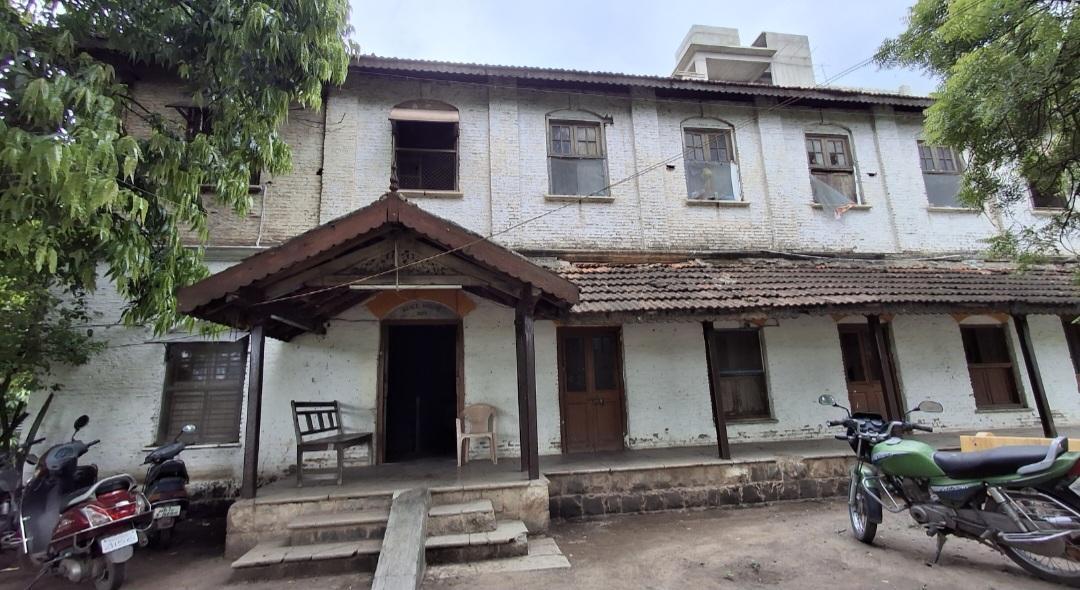
Despite its historical significance, the legacy of the Sisal Handicraft Centre is fading. Many locals are unfamiliar with this once-important craft, a problem Mr. Alhat attributes to the lack of comprehensive records and documentation.
Ganpati Murti Making
Ganpati murti making is a significant craft in Ahilyanagar, carried out on a large scale. Factories in Nalegaon and Shivaji Nagar, located in the Nepti suburb, are dedicated to the production of Ganpati murtis throughout the year. The process consists of multiple stages, each requiring meticulous attention to detail.


It takes approximately 1-2 months to create the murtis. Following the initial crafting, the murtis require several days to dry thoroughly. After drying, a primer layer is applied to each murti. This is followed by a month-long painting process to bring the murtis to their final, vibrant state. The Nepti factory plays a crucial role in the Ganesh Chaturthi festival, serving as a major supplier of murtis within the district.
Wooden Handicraft Furniture
Wooden handicraft furniture is another hallmark of Ahilyanagar’s craft industry. In Shivaji Nagar, which also lies on Nepti Road, skilled craftsmen produce a range of wooden items.


Wooden Handicraft furniture such as Devghar, stool), chairs, benches are made on a large scale in Shivaji nagar area of Ahilyanagar. A wide variety of Devghar are available at this wooden furniture factory. The intricate detailing on the Devghar is carefully handcrafted by skilled artisans.
Metal Handicrafts
Metal handicrafts, especially crafting related to the alloy bronze (colloquially known as kasha) and brass, can also be found within the district. Musical instruments like Taal and Jhaanj, that are typically used during kirtans and religious functions are typically crafted and sold in market centers that lie in the Shahaji Raje Road, Nalegaon (which is situated near the Kapad Bazar).
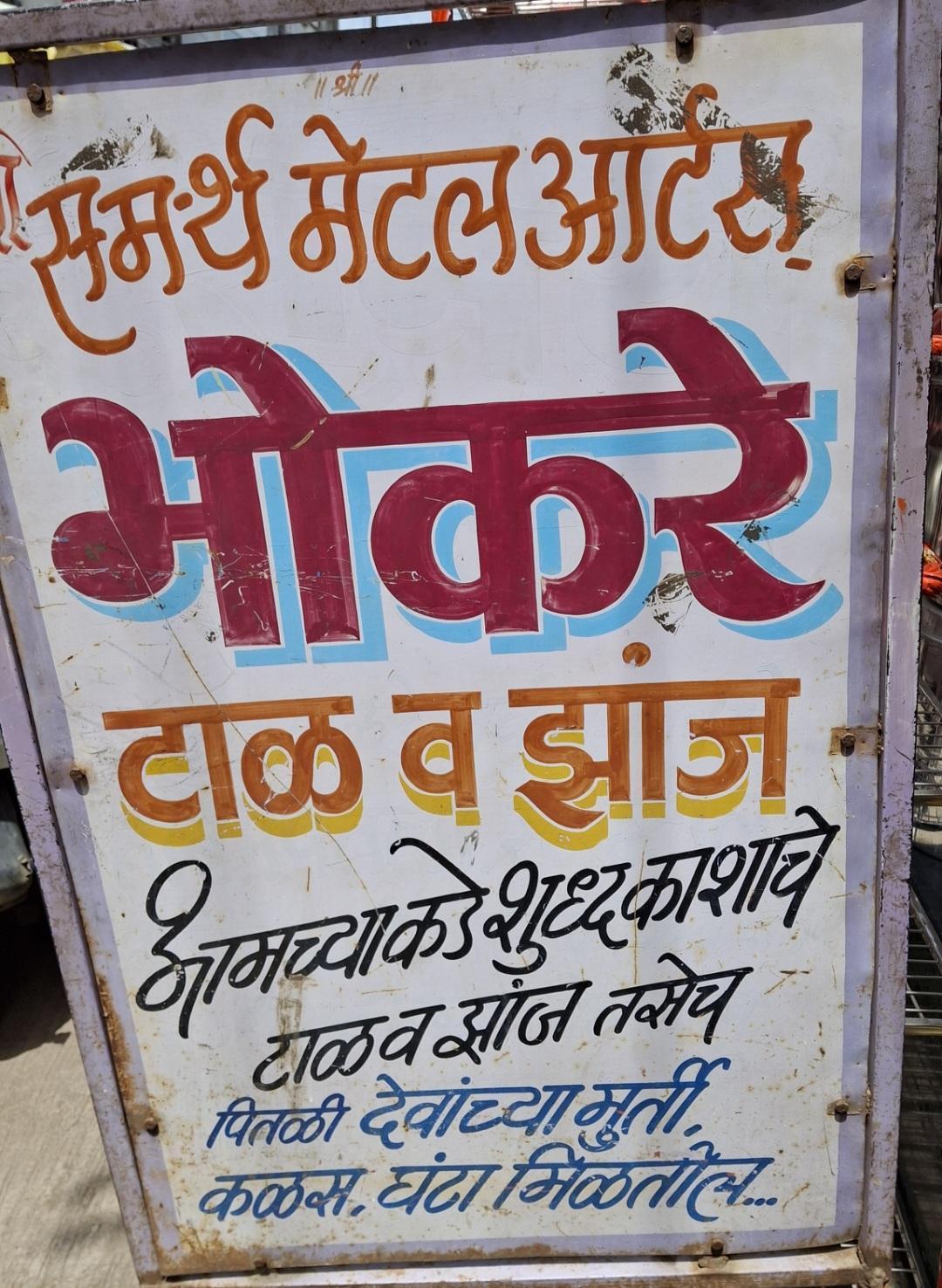
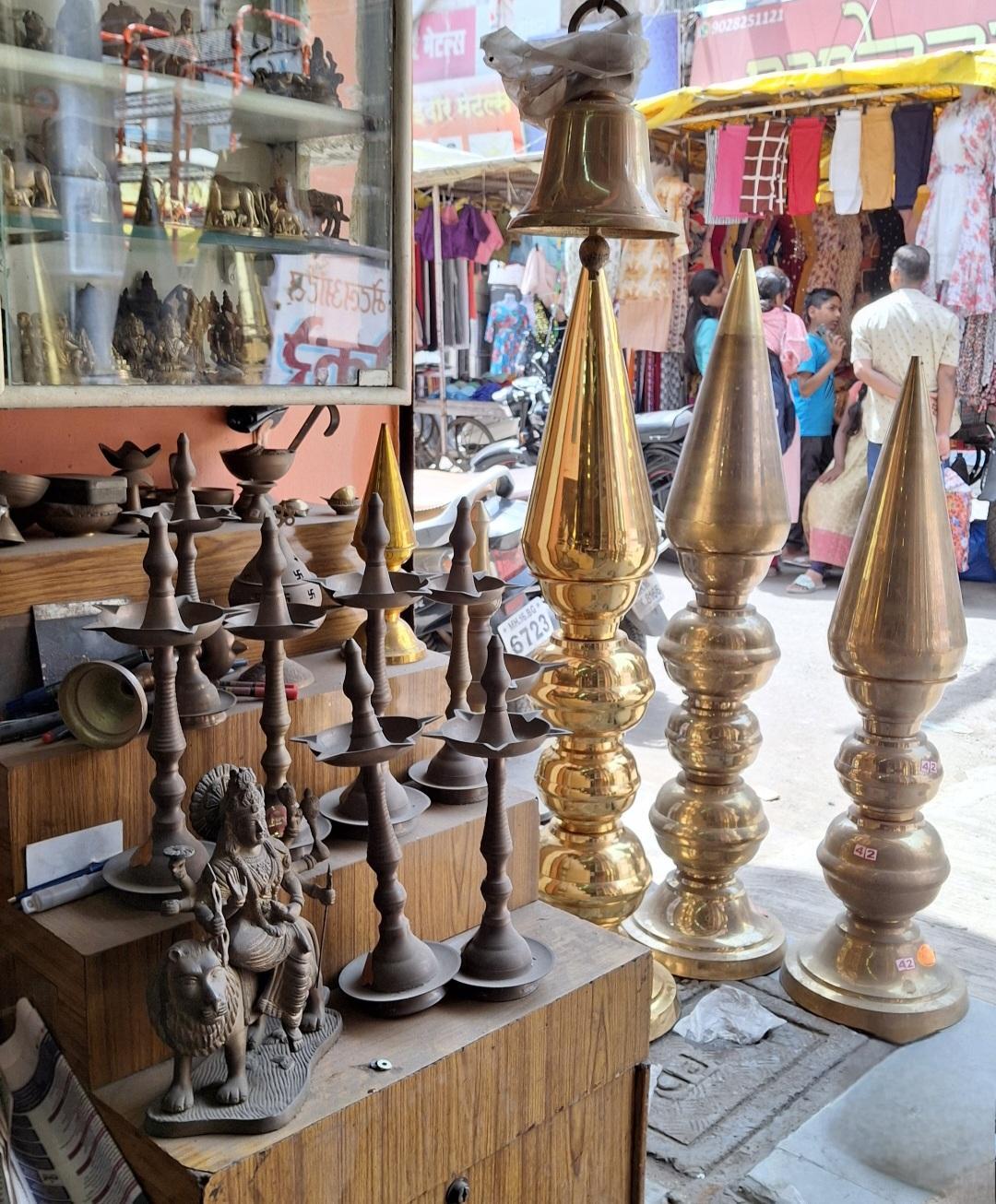
Taal and Jhaanj are traditional Indian percussion instruments manufactured from Kasha (bronze), an alloy of tin and copper. These instruments are primarily used during bhajans and aartis. Taal consists of two metal plates with a convex design that produce distinct musical tones when struck together. The surface features decorative circular patterns which are created through machine carving.
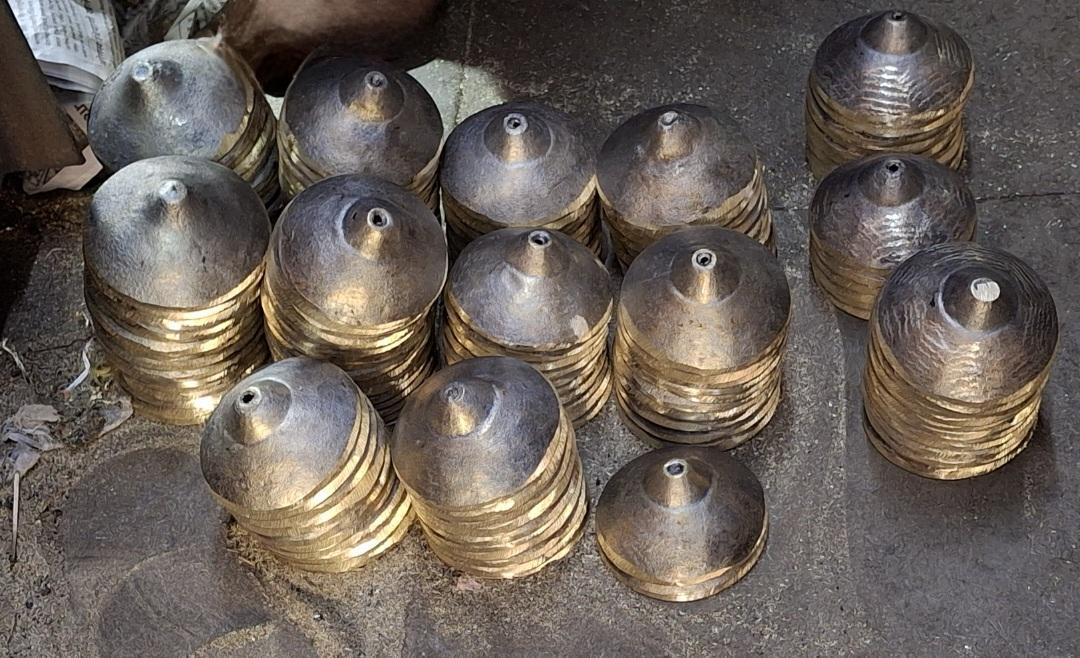

Jhaanj, while similar in basic construction to Taal, is distinguished by its flatter surface design, which produces a different sound. The process of making both Taal and Jhaanj is very interesting. They are both usually made from Kasha (bronze). Their production involves several stages of metalworking. The process begins with metal casting using bronze alloy, followed by machine-carved circular patterns. The pieces then undergo polishing for a finished appearance,
The same craftsmen who produce Taal and Jhaanj typically manufacture other bronze and brass items. These include religious murtis, temple bells (ghanta), and sacred vessels (kalash). Notably, the process of crafting kalash includes a specialized coating process that takes around eight days to complete. This protective treatment prevents corrosion while preserving the metallic finish.
Cultural Programs
International Film Festival of Ahilyanagar
The International Film Festival of Ahilyanagar was launched in 2018 by the Ahilyanagar Film Foundation. The festival features works from both regional and global filmmakers and serves as a platform for showcasing regional artistic talent. The festival provides opportunities for local and emerging filmmakers to present their short films and other creative works. It allows them to reach a broader audience and gain recognition.
Artists
Pramod Kamble
Pramod Kamble is an Indian artist, painter, and sculptor from Ahilyanagar, known for his diverse artistic works that span multiple mediums and themes. One of Kamble’s most high-profile projects is the statue of cricket legend Sachin Tendulkar. Unveiled in November 2023 at Mumbai’s Wankhede Stadium, this statue captures Tendulkar in his iconic ‘lofted shot’ pose.
![Pramod Kamble.[3]](/media/culture/images/maharashtra/ahilyanagar/artforms/pramod-kamble3-fbf3eaf3.png)
Notably, it is said that the sculpture required eight months to complete and that Tendulkar personally recommended Kamble for this commission.
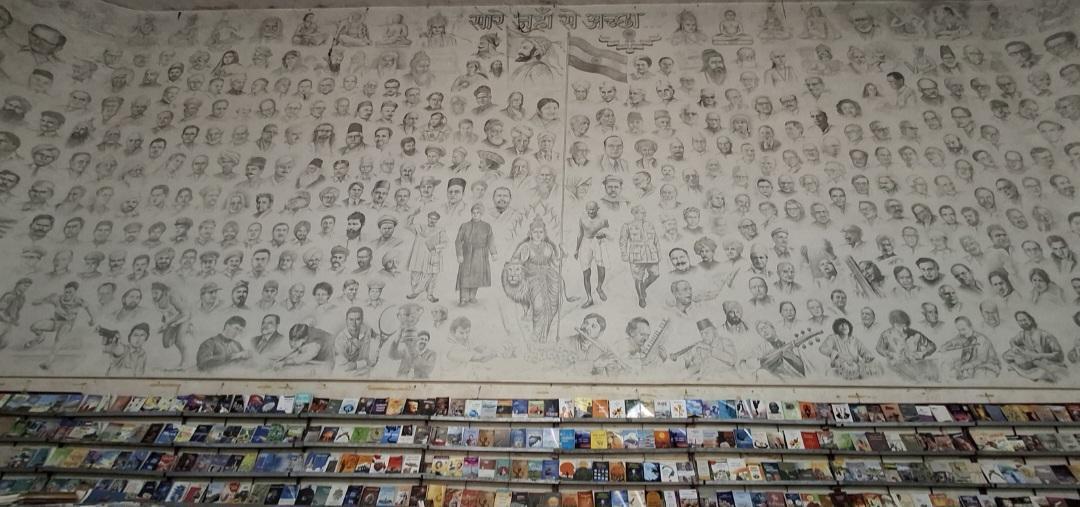
In 1997, to commemorate India’s 50th year of independence, Kamble created a pencil sketch mural titled “Saare Jahan Se Accha” at Mahavir Kaladalan in Ahilyanagar. The mural features portraits of 500 prominent Indian cultural figures. The mural, in many ways, stands as a significant documentation of India’s history through artistic representation.
Dadu Salve
Dadu Salve is an musician and social activist, who is known for his contributions to the anti-caste and Ambedkarite movements through music. Despite losing his eyesight in early infancy, he developed a significant musical career that became intertwined with social activism.
![Dadu Salve and his wife Devbai.[4]](/media/culture/images/maharashtra/ahilyanagar/artforms/dadu-salve-and-his-wife-devbai4-6723df60.jpg)
Salve’s musical career began with performing Ektari bhajans in his local community. He gained particular recognition for his mastery of the Dimdi, a traditional percussion instrument, which became his signature instrument. Salve emerged as an influential voice in the Ambedkarite movement, using musical performance as a medium for social change. It is noted that his compositions and performances were instrumental in disseminating Dr. B.R. Ambedkar’s philosophy and ideals, particularly among rural communities in Maharashtra.
Sources
2011. The Oxford Encyclopaedia of the Music of India.Oxford University Press.https://www.oxfordreference.com/view/10.1093…
Akshay Chavan. 2017.Dnyaneshwari: The Common Man’s Gita.Peepul Tree.https://www.peepultree.world/livehistoryindi…
Amey Tirodkar. 2021. Lavani Artists from Maharashtra Struggle to Make Ends Meet Amid Pandemic. Newsclick.https://www.newsclick.in/lavani-artists-maha…
Dnyandev; Vitthal Ganesh Pradhan. 1987.Jnaneshvari: Bhāvārthadipikā. Edited by Hester Marjorie Lambert. State University of New York Press (SUNY).
Dusan Deak. 2020. Religious poetry of an Indian Muslim saint: Sheikh Muhammadbaba. Vol 15 no. 1. Axis Mundi.
Introduction—Mahipati: The Biographer of the Poet Saints.Wisdom Library.https://www.wisdomlib.org/history/book/bhakt…
Keshav Waghmare. 2023.Dadu Salve’s songs of Wamandada and Bhim. People’s Archive of Rural India. https://ruralindiaonline.org/article/dadu-sa…
Maharashtra State Gazetteers. 1976. Ahmadnagar District. Gazetteers Department, Government of Maharashtra, Mumbai.
Mohammad Bilal. 2023.Who is Pramod Kamble, the man behind Sachin Tendulkar’s statue at Wankhede Stadium? Daily O. https://www.dailyo.in/ground/who-is-pramod-k…
Santosh Khedlekar. 2021. Lavani through the Ages in Pune.Sahapedia.https://map.sahapedia.org/article/Lavani-thr…
Shahu Patole. 2024.Dalit Kitchens of Marathwada.Translated by Bhushan Kargaonkar. Harper Collins: New Delhi. INTERNATIONAL FILM FESTIVAL OF AHMEDNAGAR INDIA (IFFA). Filmfreeway.https://filmfreeway.com/iffaindia
नेवासा – संत ज्ञानेश्वर मंदिर. Sant Sahiya.https://www-santsahitya-in.translate.goog/ti…
Last updated on 6 November 2025. Help us improve the information on this page by clicking on suggest edits or writing to us.